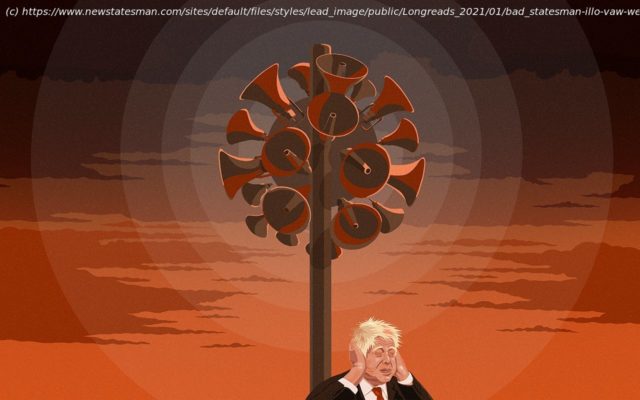How the UK government’s failure to learn the lessons of history pushed the country deeper into crisis.
You are browsing in private mode. To enjoy all the benefits of our website LOG IN or Create an Account Humankind has always been at the mercy of pandemic outbreaks of infectious disease. Historians have recorded them in detail, from the plague that devastated Athens in 430 BCE, causing the death of perhaps a quarter of the city’s population, to the plague of Justinian which, according to the Byzantine historian Procopius, “swept through the whole known world… leaving a trail of desolation in its wake” in the years 541-549 CE. Most devastating of all was the Black Death, between 1347 and 1351, which arrived in England by June 1348 and killed between a third and half of the population – up to two million people. Like the plague of Justinian, it was caused by the bubonic plague bacterium Yersinia pestis, carried on the so-called Oriental rat flea. The pandemic recurred at intervals up to the Great Plague of 1665, graphically recorded in the diaries of Samuel Pepys. “But Lord! How sad a sight it is to see the streets empty of people, and very few upon the ’Change. Jealous of every door that one sees shut up lest it should be the plague.” Contemporaries noted that the plague frequently arrived in a country through its seaports and, from the 14th century, European cities responded by requiring incoming ships to isolate for 40 days – the so-called quarantine – as well as establishing “pesthouses” or isolation hospitals for sufferers. In the London plague of 1665, authorities locked the infected in their houses and painted a red cross on the front door. These have essentially been the methods used by the state to combat pandemics ever since. Infectious diseases are spread in a variety of ways: the carrier of typhus, for example, is the human body louse, while cholera and typhoid are spread through water polluted by infected human excretions. Most common of all is infection by the tiny, invisible droplets people exhale when they cough or sneeze, as with tuberculosis. For many centuries, however, the state was also guided by contemporary medical understandings of disease, which considered infection the result of an imbalance of “humours” in the body (hence the practice of bloodletting, to restore the balance) or the product of atmospheric factors (so the fumigation of streets, or ringing of church bells to stir up the supposedly polluted air). But during the Black Death and the plague of 1665, none of this had any effect. [See also: How the UK lost control of the mutant strain of Covid-19] It was not just trade but also war that spread infections. Not until the 20th century did wars occur in which more soldiers were killed by the enemy than perished from disease. Armies – large numbers of men living in unhygienic conditions and moving rapidly across large swathes of territory – spread diseases, especially typhus, with terrifying rapidity. By the 19th century, it was cholera that almost invariably followed armies across the European continent, most notably in the Crimean War of 1853-56. In that event, the state was doing more to spread disease than to prevent it. In 1918 the Spanish flu, so called because, during the First World War, neutral Spain was almost the only country in Europe that was not trying to suppress news of the disease’s ravages, was spread by troops. The flu was first reported in Kansas in the spring of 1918, and was soon carried across the Atlantic by masses of troops sailing to Europe, following America’s entry into the war. From there, it was taken by soldiers returning after the end of the war to far-flung parts of the British and French empires and further afield. *** The impact of the Spanish flu was blunted by the fact it overlapped with the final stages of the First World War, though it had little effect on the war itself: the German spring offensive had already run into the sands by the time the flu reached Europe, and the disease did not, in any case, discriminate between the combatant nations. Four years of war, privation and economic blockade did take their toll, however, and the second wave of the epidemic that began in the late summer of 1918 was far deadlier than the first. It is likely that between 17 and 20 million people died worldwide; in Britain, the figure was 228,000; this compared with nearly 750,000 military personnel killed or missing in action. Huge efforts had been made to ensure the health of the troops from the start: hygiene and cleanliness were a priority and, on the Western Front at least, typhus and cholera, the traditional scourges of armies, were kept at bay. In the face of the enormous suffering and mortality among the troops, commemorated in war memorials across the country, the influenza epidemic barely registered in the national consciousness. Until late in 1918, it was not even discussed in parliament. By the time the Spanish flu arrived, medical knowledge of disease had been transformed by the new science of bacteriology, aided by technological innovations such as the microscope and chemical dyes for staining bacteria samples. Led by pioneering scientists, notably Louis Pasteur and Robert Koch and their pupils, medical research had discovered the causes of a wide range of diseases, from anthrax and cholera to syphilis and typhus, and worked out how to control or even prevent their transmission. Governments began deploying preventive strategies, aided by the “hygienic revolution” – the great clean-up of the burgeoning cities of the late 19th century – driven as much by civic pride as by medical imperative.






